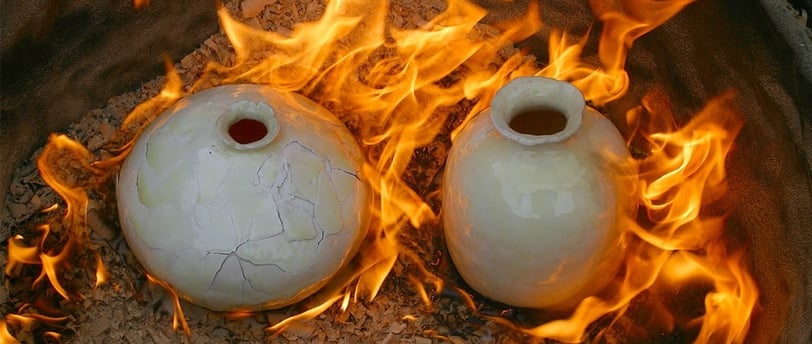What's So Good About Raku Pottery Anyway?


Raku pottery has a unique charm that has captivated artists and enthusiasts for centuries. Originating in Japan during the 16th century, raku pottery has since spread worldwide, celebrated for its distinct aesthetic and fascinating production process. But what exactly makes raku pottery so special, and why should you consider delving into this captivating art form?
At the heart of raku pottery's allure is its unpredictability and individuality. Unlike other ceramic techniques, raku firing involves removing pieces from the kiln while they are still glowing hot. This sudden exposure to the elements, followed by rapid cooling, creates stunning and often unexpected patterns of colour and texture on the pottery's surface. Each piece becomes a one-of-a-kind masterpiece, showcasing the serendipitous beauty of the raku process.
One of the most enticing aspects of raku pottery is its accessibility. While traditionally crafted by skilled artisans, modern advancements have made it possible for enthusiasts to try their hand at making raku pottery at home. All you need is to buy a raku kiln, or even build one yourself. With the right tools and a bit of patience, you can embark on your own raku pottery journey, exploring the endless possibilities of this ancient art form from the comfort of your own backyard.
Making raku pottery at home offers a deeply rewarding creative experience. From moulding the clay to applying glazes and witnessing the mesmerising transformation during the firing process, each step is an opportunity for artistic expression and exploration. Whether you're a seasoned ceramicist or a curious beginner, the hands-on nature of raku pottery allows for experimentation and discovery, fostering a deep connection between artist and artwork.
Beyond its artistic appeal, raku pottery holds a special significance in Japanese culture, where it has long been associated with tea ceremonies and spiritual rituals. The act of creating and sharing raku pottery is steeped in tradition and symbolism, reflecting themes of impermanence, simplicity, and the beauty of the present moment. By embracing the practice of raku pottery, you not only engage in a rich artistic tradition but also connect with a profound cultural heritage that spans centuries.
In conclusion, what's so good about raku pottery anyway? It's the fusion of tradition and innovation, the celebration of imperfection, and the joy of creative expression. Whether you're drawn to its striking visual appeal or intrigued by its rich cultural history, raku pottery offers a deeply rewarding journey of discovery for artists and enthusiasts alike. So why not buy a raku kiln, gather some clay, and embark on your own raku pottery adventure today?
